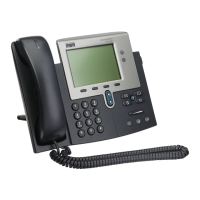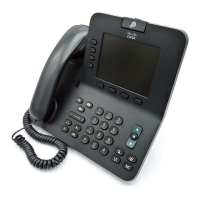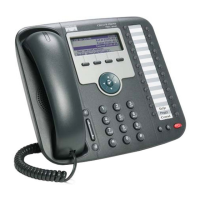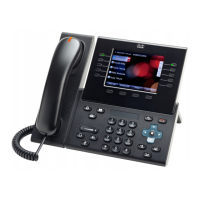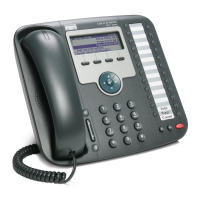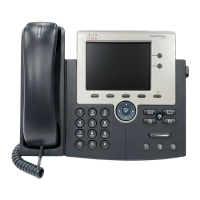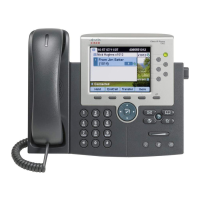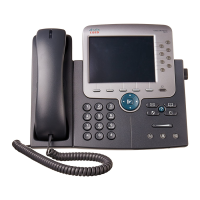1-9
Cisco Unified IP Phone 7931G Administration Guide for Cisco Unified Communications Manager 6.0
OL-12457-01
Chapter 1 An Overview of the Cisco Unified IP Phone
What Networking Protocols Are Used?
Real-Time Transport
Protocol (RTP)
RTCP works in conjunction with
RTP to provide QoS data (such as
jitter, latency, and round trip delay)
on RTP streams.
RTCP is disabled by default, but you
can enable it on a per phone basis
using Cisco Unified
Communications Manager. For more
information, see the “Network
Configuration Menu” section on
page 4-7.
Skinny Client Control
Protocol (SCCP)
SCCP includes a messaging set that
allows communications between call
control servers and endpoint clients
such as IP Phones. SCCP is
proprietary to Cisco Systems.
Cisco Unified IP Phones use SCCP
for call control.
Transmission Control
Protocol (TCP)
TCP is a connection-oriented
transport protocol.
Cisco Unified IP Phones use TCP to
connect to Cisco
Unified Communications Manager
and to access XML services.
Transport Layer
Security (TLS)
TLS is a standard protocol for
securing and authenticating
communications.
When security is implemented, Cisco
Unified IP Phones use the TLS
protocol when securely registering
with Cisco Unified Communications
Manager.
Trivial File Transfer
Protocol (TFTP)
TFTP allows you to transfer files
over the network.
On the Cisco Unified IP Phone,
TFTP enables you to obtain a
configuration file specific to the
phone type.
TFTP requires a TFTP server in your
network, which can be automatically
identified from the DHCP server. If
you want a phone to use a TFTP
server other than the one specified by
the DHCP server, you must manually
assign TFTP server from the
Network Configuration menu on the
phone.
User Datagram Protocol
(UDP)
UDP is a connectionless messaging
protocol for delivery of data packets.
Cisco Unified IP Phones transmit and
receive RTP streams, which utilize
UDP.
Table 1-1 Supported Networking Protocols on the Cisco Unified IP Phone (continued)
Networking Protocol Purpose Usage Notes

